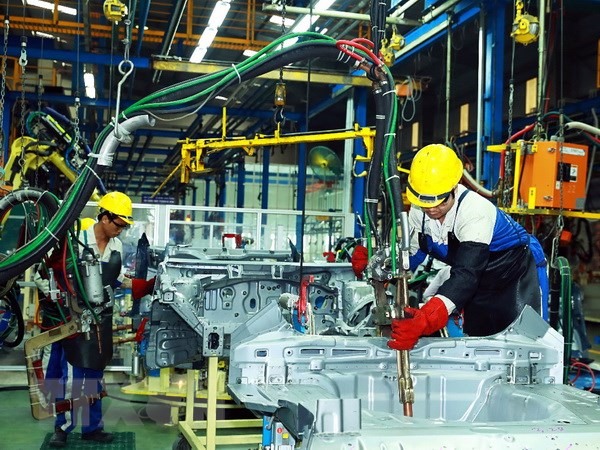 Economy
Economy

The manufacturing sector continued to expand at the end of the first quarter, with signs of growth picking up during March, a survey released on Monday by Nikkei and IHS Markit said.
 |
| Việt Nam’s PMI posted 51.9 in March, up from 51.2 in February. - VNA/VNS Photo |
HÀ NỘI — The manufacturing sector continued to expand at the end of the first quarter, with signs of growth picking up during March, a survey released on Monday by Nikkei and IHS Markit said.
The Manufacturing Purchasing Managers’ Index (PMI) rose to 51.9 in March from 51.2 in February, signalling an improvement in the health of the sector for the 40th successive month.
Although registering below the 2018 average, the index was comfortably above the 50.0 no-change mark at the end of Q1.
With the improvement, Việt Nam rose to second place behind Myanmar as output growth accelerated to the strongest level since November 2018 while total new business and exports also rose more quickly than in February.
The survey said: “New orders rose for the 40th month in a row during March amid increased customer numbers and growth of new export business. Moreover, the rate of expansion in total new orders was the fastest in three months.”
The rate of manufacturing growth quickened for the second successive month, enabling firms to reduce their backlog of work and add to stocks of finished goods. However, the latest depletion of outstanding business was only marginal and the slowest in the current three-month sequence of decline.
“While still some way short of the strong growth rates recorded last year, the manufacturing PMI data for March suggests that Vietnamese firms have weathered the recent slowdown in global trade and were able to continue to secure greater new order volumes and expand production,” Andrew Harker, associate director at IHS Markit, which compiles the survey, said.
“IHS Markit currently forecasts industrial production to grow 8.2 per cent in 2019, with PMI data suggesting that the manufacturing sector will continue to contribute positively to this.”
However, the survey also showed employment continued to decline marginally while the rate of input cost inflation remained relatively weak, providing scope for firms to lower their output prices again.
The increase in output was recorded in spite of a slight reduction in staffing levels in March. Panellists suggested that employee resignations had hampered their efforts to expand workforce numbers in response to greater workloads.
As has been the case throughout 2019, inflationary pressures remained muted in the sector at the end of the first quarter. Input costs rose marginally and at a pace that was well below the series average. This lack of pressure on costs meant that firms were again able to offer discounts to customers. Charges decreased for the fourth consecutive month, albeit fractionally.
Manufacturers in Việt Nam responded to higher output requirements by increasing their purchasing activity sharply, with the rate of expansion being the fastest in the year-to-date.
Stocks of purchases decreased, however, as inputs were used to support production growth. The fall in input inventories was the second in as many months.
Meanwhile, the first meaningful reduction in suppliers’ delivery times in over two years was recorded, following broadly unchanged vendor performance in February.
Almost half of all survey respondents predicted output to increase over the coming year. The strong optimism reflected expected improvements in market demand and investment to expand production capacity.
These factors are expected to help firms achieve their plans for higher output. Confidence was higher than in February and broadly in line with the series average. — VNS




